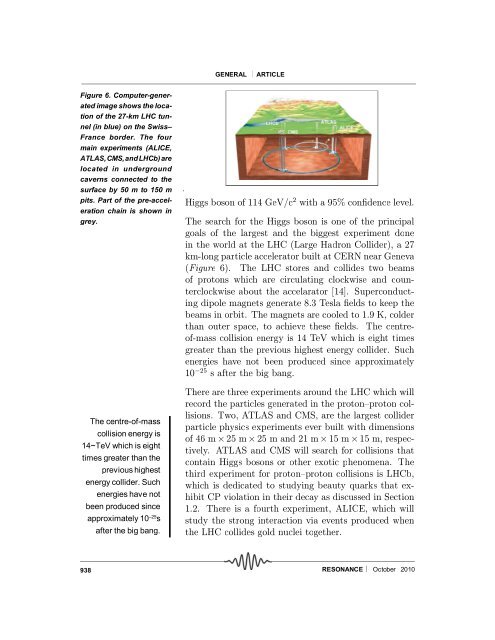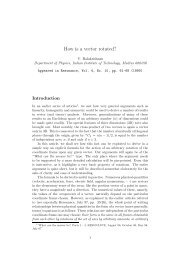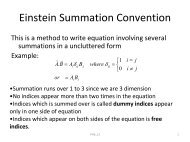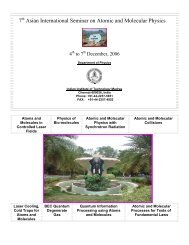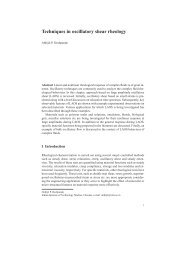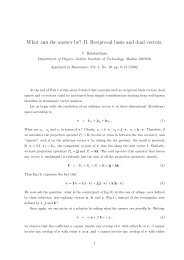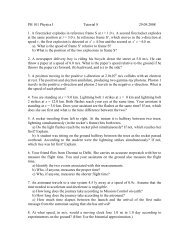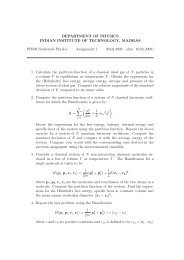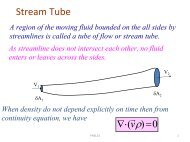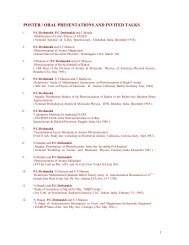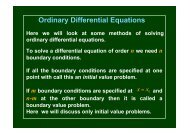Symmetry Principles and Conservation Laws in Atomic and ...
Symmetry Principles and Conservation Laws in Atomic and ...
Symmetry Principles and Conservation Laws in Atomic and ...
Create successful ePaper yourself
Turn your PDF publications into a flip-book with our unique Google optimized e-Paper software.
GENERAL ARTICLEFigure 6. Computer-generatedimage shows the locationof the 27-km LHC tunnel(<strong>in</strong> blue) on the Swiss–France border. The fourma<strong>in</strong> experiments (ALICE,ATLAS,CMS,<strong>and</strong>LHCb) arelocated <strong>in</strong> undergroundcaverns connected to thesurface by 50 m to 150 mpits. Part of the pre-accelerationcha<strong>in</strong> is shown <strong>in</strong>grey.The centre-of-masscollision energy is14~TeV which is eighttimes greater than theprevious highestenergy collider. Suchenergies have notbeen produced s<strong>in</strong>ceapproximately 10 –25 safter the big bang.Higgs boson of 114 GeV=c 2 with a 95% con¯dence level.The search for the Higgs boson is one of the pr<strong>in</strong>cipalgoals of the largest <strong>and</strong> the biggest experiment done<strong>in</strong> the world at the LHC (Large Hadron Collider), a 27km-long particle accelerator built at CERN near Geneva(Figure 6). The LHC stores <strong>and</strong> collides two beamsof protons which are circulat<strong>in</strong>g clockwise <strong>and</strong> counterclockwiseabout the accelarator [14]. Superconduct<strong>in</strong>gdipole magnets generate 8.3 Tesla ¯elds to keep thebeams <strong>in</strong> orbit. The magnets are cooled to 1.9 K, colderthan outer space, to achieve these ¯elds. The centreof-masscollision energy is 14 TeV which is eight timesgreater than the previous highest energy collider. Suchenergies have not been produced s<strong>in</strong>ce approximately10 ¡25 s after the big bang.There are three experiments around the LHC which willrecord the particles generated <strong>in</strong> the proton{proton collisions.Two, ATLAS <strong>and</strong> CMS, are the largest colliderparticle physics experiments ever built with dimensionsof 46 m £ 25 m £ 25 m <strong>and</strong> 21 m £ 15 m £ 15 m, respectively.ATLAS <strong>and</strong> CMS will search for collisions thatconta<strong>in</strong> Higgs bosons or other exotic phenomena. Thethird experiment for proton{proton collisions is LHCb,which is dedicated to study<strong>in</strong>g beauty quarks that exhibitCP violation <strong>in</strong> their decay as discussed <strong>in</strong> Section1.2. There is a fourth experiment, ALICE, which willstudy the strong <strong>in</strong>teraction via events produced whenthe LHC collides gold nuclei together.938 RESONANCE October 2010


